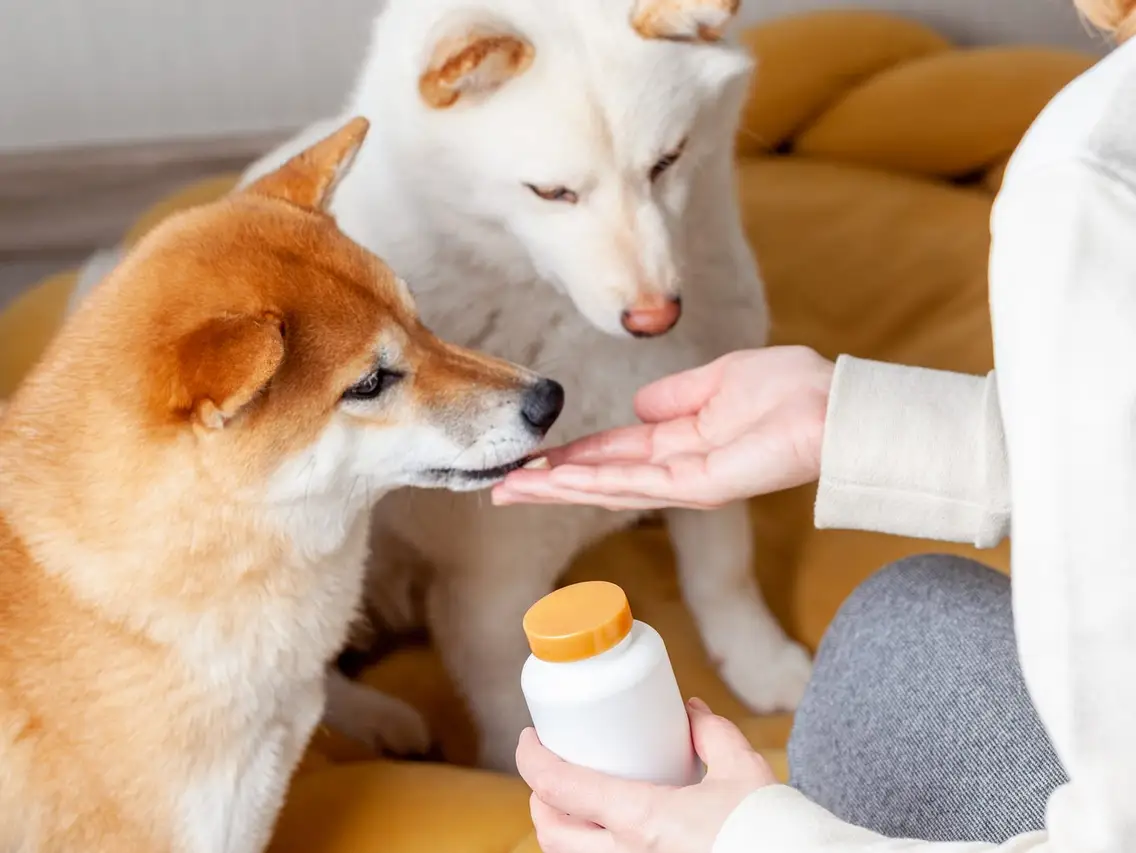Understanding Safe Dosage: A Guide to Benadryl Administration in Dogs
Benadryl, an antihistamine commonly used to treat allergies in humans, can also be helpful for dogs experiencing allergic reactions or mild itching. However, determining the correct dosage for your dog is crucial to ensure their safety. This comprehensive guide explores the appropriate use of Benadryl in dogs, outlines safe dosage calculations, and emphasizes the importance of consulting your veterinarian before administering any medication.
When is Benadryl Appropriate for Dogs?
Benadryl (diphenhydramine) can be helpful in managing mild allergic reactions in dogs, including symptoms like:
- Hives
- Mild itchiness
- Insect bites or stings
- Allergic reactions to certain medications
Important Considerations:
- Not a First-Line Treatment: Benadryl should not be used as a primary treatment for serious allergic reactions. If your dog is experiencing difficulty breathing, facial swelling, or severe vomiting, seek immediate veterinary attention.
- Underlying Cause: While Benadryl can address the symptoms, it doesn’t treat the underlying cause of the allergy. Consult your veterinarian to identify the allergen and develop a long-term management plan.
Dosage Dilemma: Determining the Safe Amount for Your Canine Companion
Never administer any medication to your dog without consulting your veterinarian first. They can determine the appropriate dosage based on your dog’s weight, breed, and the severity of their symptoms. However, understanding general guidelines for Benadryl dosage in dogs can be helpful:
- Standard Dosage: The recommended dosage for Benadryl in dogs is typically 1 milligram (mg) per pound of body weight, administered two to three times a day.
- Weight Matters: A crucial factor is your dog’s weight. A larger dog will require a higher dosage than a smaller dog.
- Dosage Form: Benadryl comes in various forms, including tablets, liquids, and chewables. The concentration of diphenhydramine will vary depending on the form. Always administer the correct dosage based on your veterinarian’s instructions and the medication’s concentration.
Here’s a simple formula to estimate the dosage based on weight (mg/lb = milligrams per pound):
- Dog’s weight (in pounds) x 1 mg/lb = Total milligrams of Benadryl
Example:
- If your dog weighs 20 pounds:
- 20 pounds x 1 mg/lb = 20 mg of Benadryl
Remember: This is a general estimate. Always consult your veterinarian for the most accurate and safe dosage for your dog.
Beyond the Numbers: Important Precautions When Using Benadryl in Dogs
While Benadryl can be helpful in certain situations, here are some precautions to keep in mind:
- Not for All Dogs: Certain dog breeds, pregnant or nursing dogs, and dogs with underlying health conditions might not tolerate Benadryl. Consult your veterinarian to ensure it’s safe for your dog.
- Potential Side Effects: Drowsiness, dry mouth, lethargy, and vomiting are some potential side effects of Benadryl in dogs. If you notice any concerning reactions, discontinue use and consult your veterinarian.
- Overdose Risk: Exceeding the recommended dosage can be dangerous for dogs. Keep Benadryl out of your dog’s reach and store it securely.
- Interaction with Other Medications: Benadryl can interact with other medications your dog might be taking. Inform your veterinarian about all medications your dog is on before administering Benadryl.
When in Doubt, Seek Veterinary Guidance
The safest approach is always to consult your veterinarian before giving your dog any medication, including Benadryl. They can assess your dog’s individual needs, determine the appropriate dosage, and address any underlying allergies or conditions effectively.
FAQ: Frequently Asked Questions About Benadryl Dosage in Dogs
Q: Can I use the Benadryl dosage calculator I found online?
- A: Online calculators can be a helpful reference, but they shouldn’t replace veterinary consultation. There might be factors specific to your dog that the calculator doesn’t account for. It’s always best to consult your veterinarian for a personalized and safe dosage recommendation.
Q: What if I accidentally gave my dog too much Benadryl?
- A: If you suspect your dog has ingested too much Benadryl, contact your veterinarian or animal poison control center immediately. Prompt medical attention is crucial.
Q: Are there any alternative medications for dog allergies?
- A: Yes. Your veterinarian can recommend alternative medications or allergy management strategies depending on the severity.
Q: My dog seems very drowsy after taking Benadryl. Is this normal?
- A: Drowsiness is a common side effect of Benadryl in dogs. The intensity and duration can vary depending on the dosage and your dog’s individual sensitivity. If the drowsiness persists or seems excessive, consult your veterinarian.
Q: Can I give my dog children’s Benadryl?
- A: It’s generally not recommended to give your dog children’s Benadryl. Children’s formulations might contain additional ingredients or sweeteners that can be harmful to dogs. Always stick to Benadryl medications specifically formulated for dogs and follow your veterinarian’s dosage instructions.
Q: How long does Benadryl typically take to work in dogs?
- A: Benadryl usually starts working within 30 to 60 minutes in dogs. However, the onset and duration of effects can vary depending on the dosage and the severity of the allergic reaction.
Q: Can I give Benadryl to my dog to prevent allergies?
- A: No, Benadryl is not typically used as a preventative medication for allergies. It’s best to identify and avoid the allergen whenever possible. Consult your veterinarian about long-term allergy management strategies for your dog.
Q: Are there any natural alternatives to Benadryl for dog allergies?
- A: Several natural remedies might offer mild relief for dog allergies, such as oatmeal baths, quercetin supplements, or fish oil. However, their effectiveness can vary. Discuss these options with your veterinarian to determine if they might be suitable for your dog’s specific needs.
Remember: Responsible pet ownership involves prioritizing your dog’s safety and well-being. While Benadryl can be a helpful tool in certain situations, consulting your veterinarian before administering any medication is crucial. They can provide the most accurate and safe guidance for your furry friend.






More Stories
Where to Watch USMNT vs Jamaica National Football Team
How I Met My Monster
How Should a Ring Fit